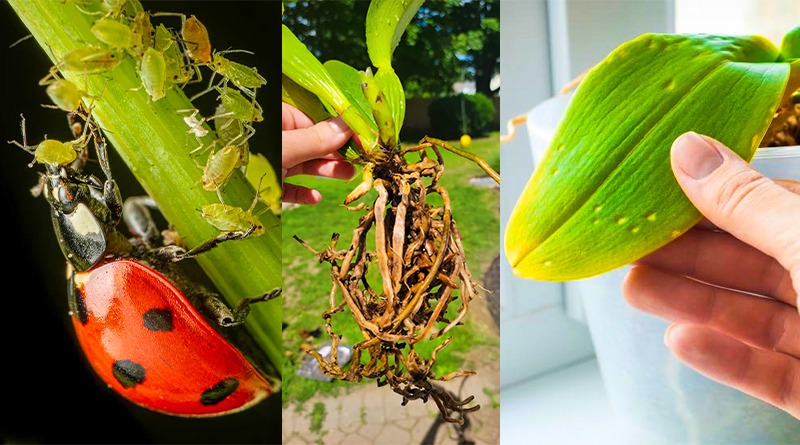Why Orchid Leaves Wilting occur?
Here are the common reasons for orchid leaves wilting:
- Overwatering:
- Symptoms: Wilting leaves, root rot, and a foul odor from the pot.
- Solution: Allow the potting mix to dry out completely between waterings. Ensure the pot has adequate drainage.
- Underwatering:
- Symptoms: Wrinkled and dry leaves.
- Solution: Increase the frequency of watering, but avoid overwatering. Check the moisture level of the potting mix regularly.
- Improper Lighting:
- Symptoms: Wilting leaves, pale or yellowing leaves, and stunted growth.
- Solution: Provide bright, indirect light. Avoid direct sunlight, which can scorch the leaves.
- Pests and Diseases:
- Symptoms: Wilting leaves, discolored spots, or visible pests.
- Solution: Inspect the plant regularly for pests like mealybugs, scale insects, or spider mites. Treat infestations with appropriate insecticides.
- Temperature Stress:
- Symptoms: Wilting leaves, brown leaf tips, or stunted growth.
- Solution: Maintain a consistent temperature between 60-85°F (15-30°C). Avoid sudden temperature fluctuations.
To revive a wilting orchid, take the following steps:
- Check the Roots: Remove the orchid from the pot and inspect the roots. Trim any rotten or damaged roots.
- Repot: Repot the orchid in a well-draining potting mix, ensuring the roots are not overcrowded.
- Adjust Watering: Water the orchid only when the potting mix is dry to the touch.
- Provide Optimal Light: Place the orchid in a location with bright, indirect light.
- Monitor for Pests: Inspect the plant regularly for pests and treat as needed.
By addressing these potential causes and taking appropriate action, you can help your orchid recover and thrive.
61 total views, 1 views today




